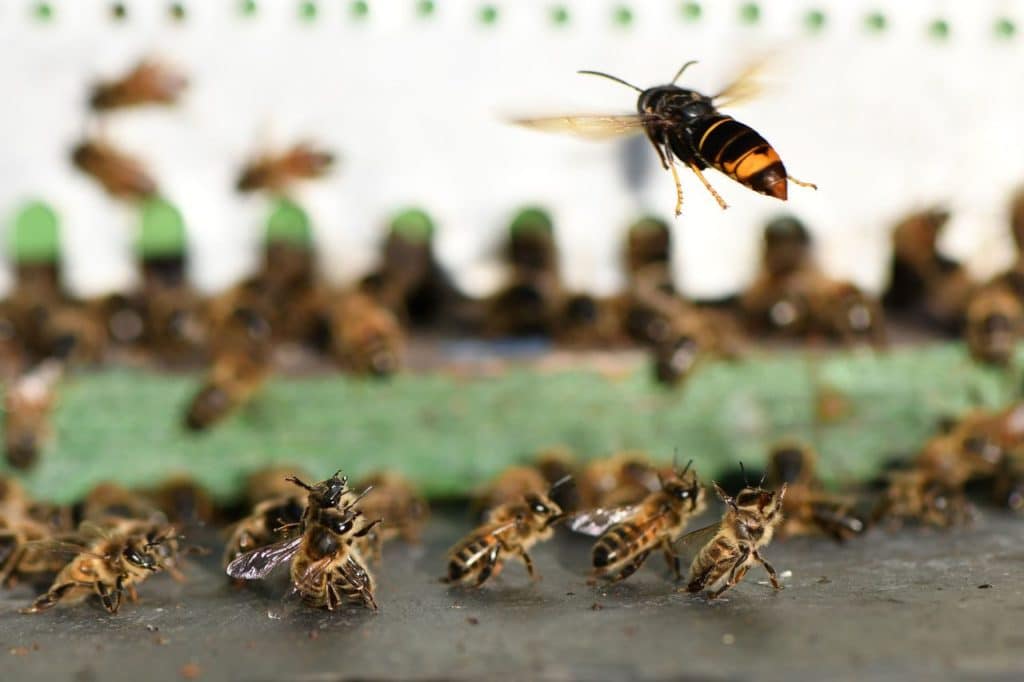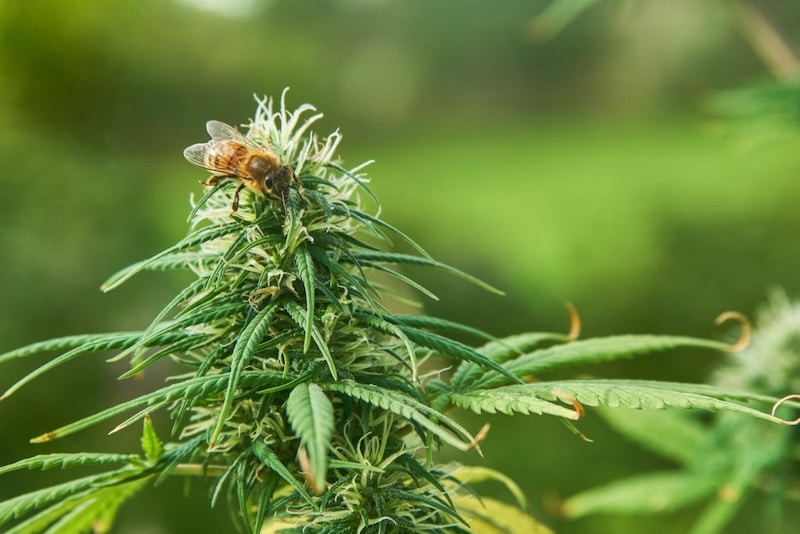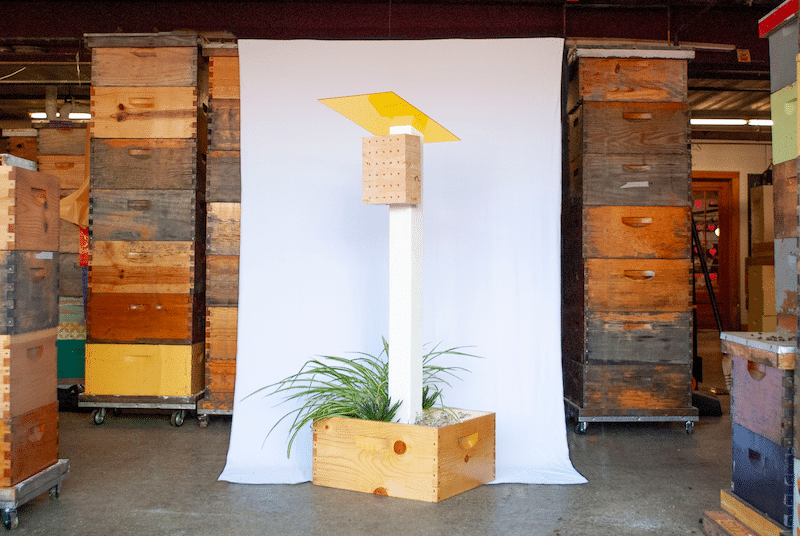Murder hornets are getting some publicity lately. First recognized by scientists back in 2019, now the media is publishing mainstream stories about these Giant Asian Hornets. The news has friends, family, and clients of The Best Bees Company in knots, understandably. As the Cheif Scientific Officer of a company whose mission it is to protect honeybees, a species threatened by the hornet, I wanted to share my perspective on the issue.
I studied wasps as part of my Ph.D. Polistes dominulus is a type of paper wasp, easily identified by hanging back legs while flying. It is also considered an invasive species, like the Giant Asian Hornets (V. mandarinia), and is now established across North America. The first reported sighting of P. dominulus was identified in Cambridge, MA in 1978.
It is now established across the U.S. and Canada, out-competing native paper wasp species in much of the habitat. My research found that this yellow-and-black species of wasp was successful at establishing and out-competing a native species of paper wasp (P. fuscatus), though an evolutionary theory called a Release Hypothesis.
The Enemy Release Hypothesis is a common explanation for the dominance of exotic invasive species. When an invasive species arrives in a new territory, it leaves its old enemies (pathogens, parasites, and predators) behind, while those in their new home are less effective at constraining them. The result is sometimes rampant growth that threatens native species and ecosystems.
The paper wasp was a classic example of the Enemy Release Hypothesis. When it left Italy for Cambridge, it was ‘released’ from it’s ‘enemies’— the parasite. We can conclude that the first wasp colonies hitched a ride on a shipping cargo container to Boston, where it would thrive, enemy-free. Giant Asian Hornets seem no different.
This is the beauty of scientific theory, whereby evolution plays by a set of rules, and the players (the species at hand) change in and out. Genetic tests of North American samples of these hornets show that individuals in the New World are not related to one another. This indicates successive introductions. The geographical approximation of Italy and New England mirror that of Japan and the Pacific Northwest, thus we could expect a similar mode of hitchhiking took place— on the shipping cargo container.
And the V. mandarinia ‘murder hornets’ (there’s got to be a better name, please!) are also ‘released’ from at least one constraint— predators. Honeybees that have developed a group defensive behavior of ganging up on a hornet to fireball it to death, by elevating their collective heat through rapid contractions of their wing muscles, all coordinated at once.
While the European honeybees in North America can and do raise their collective temperature in response to fungal infections, a group defensive behavior called ‘behavioral fever,’ this hasn’t yet been well documented against animal predators such as wasps in the New World. So the doors are open and unlocked for V. mandarinia to have lunch, being released from that constraint, ready to reap the resources of the open niche that is North America.
Luckily, beekeepers and Citizen Scientists are taking action.
All media reports are including interviews with beekeepers, who are once again the best eyes and ears on the ground, with the most in-depth knowledge of how the natural world is changing around us. Beekeepers listen to what bees are telling us. We understand that beehives are barometers of environmental health, and do we don’t hesitate to have scientists come in and speak at our monthly beekeeping club meetings happening in nearly every county across the U.S.
Without beekeepers, we wouldn’t know these murder hornets were here. They were quietly identified in 2019 by beekeepers and scientists like me. Now, amidst a global pandemic, the Giant Asian Hornet has found its way into the spotlight… and the parallels between the two plagues are uncanny. Do we take this threat seriously? If we don’t, what is at stake? Our pollinators? Our food systems? If COVID-19 has taught us anything it’s that we must take early action.
This starts by coming together and talking about it. Identifying vulnerable populations is key to protection, in this example, the beehives. Anyone can get a beehive and connect it do a data reporting system. Beekeepers can add entrance guards to beehives to prevent these hornets from getting in; however, like wearing a mask, this only slows the spread. Real government intervention is needed. For COVID-19, reducing travel slows the spread, and for wasps and hornets, we need to clean those shipping containers with high pressure, hot water to kick off potentially invasive species.
Social animals make the best invasive species because they only need one individual to kick off an eternity of unimaginable life. A queen can store sperm for years in some species, such as honeybees, meaning that a mated queen can potentially hitch a ride on anything to get to another land and establish a new society. This is why we see this story over and over again in wasps and hornets. Evolutionary theory informs us of this, helps us predict it, and gives us insight into how it plays out.
Where does this go from here?
For P. dominulus paper wasps, they’ve mellowed out a bit over the years, and we see the native species rebounding a bit, perhaps eventually coming to share the niches and form an ecosystem with a shifted balance, a new baseline.
For V. mandarinia, and perhaps even for COVID-19, evolution makes no exceptions. Honeybees and humans alike need help once more. We see lessons in Asia of bees learning to live with their predator, developing new defenses, entirely based on the very thing that made them vulnerable: their group living nature. And in China, we see human societies opening back up too, with children back in school but wearing masks, until we develop a vaccine, treatment, or societal change.
What paper wasps, murder hornets, and COVID-19 teach us is not so much the (very real) fear these threats bring, but that species are mere players in the game of life, and just like honeybees, we humans are pretty damn smart players.






